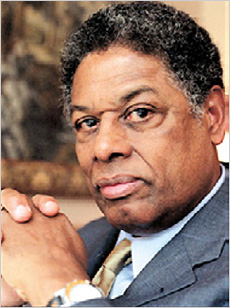Stimulus or Sedative?
Thomas Sowell
About Dr. Thomas Sowell
Sowell was born in North Carolina in 1930 and reared in Harlem. After dropping out of high school, he was drafted into the military and served in the Marines during the Korean War.
During his 20s, when he was a self-described Marxist, he attended and graduated magna cum laude from Harvard with a B.A. in economics. He also has a master's in economics from Columbia and a Ph.D. in economics from the University of Chicago.
He has taught at Howard University, Cornell, Brandeis, Amherst and UCLA, and is now the Rose and Milton Friedman Senior Fellow on Public Policy at Stanford's Hoover Institution.
Abraham Lincoln once asked an audience how many legs a dog has, if you called the tail a leg? When the audience said "five," Lincoln corrected them, saying that the answer was four. "The fact that you call a tail a leg does not make it a leg."
That same principle applies today. The fact that politicians call something a "stimulus" does not make it a stimulus. The fact that they call something a "jobs bill" does not mean there will be more jobs.
What have been the actual consequences of all the hundreds of billions of dollars that the government has spent? The idea behind the spending is that it will cause investors to invest, lenders to lend and employers to employ.
That was called "pump priming." To get a pump going, people put a little water into it, so that the pump will start pumping out a lot of water. In other words, government money alone was never supposed to restore the economy by itself. It was supposed to get the private sector spending, lending, investing and employing.
The question is: Is that what has actually happened?
The stimulus spending started back in 2008, during the Bush administration, and has continued under the Obama administration, so it has had plenty of time to show what it can do.
After the Bush administration's stimulus spending in 2008, business spending on equipment and software fell — not rose — by 28 percent. Spending on durable goods fell 22 percent.
What about the banks? Four months after the Trouble Asset Relief Program (TARP) poured billions of dollars into the banks, the biggest recipients of that money made 23 percent fewer loans than before. A year later, the credit extended by American banks as a whole was down — not up — by more than $20 billion.
Spending in general was down. The velocity of circulation of money fell faster than it had in half a century.
Just two weeks ago, the Wall Street Journal reported, "U.S. banks posted last year their sharpest decline in lending since 1942." You can call it a stimulus, if you want to, just as you can call a tail a leg. But the actual effect of what is called a "stimulus" has been more like that of a sedative.
Why aren't the banks lending, with all that money sitting there gathering dust?
You don't lend when politicians are making it more doubtful whether you are going to get your money back — either on time or at all. From the White House to Capitol Hill, politicians are coming up with all sorts of bright ideas for borrowers not to have to pay back what they borrowed and for lenders not to be able to foreclose on people who are months behind on their mortgage payments.
President Obama keeps telling us that he is "creating jobs." But more and more Americans have no jobs. The unemployment rate has declined slightly, but only because many people have stopped looking for jobs. You are only counted as unemployed if you are still looking for a job.
If all the unemployed people were to decide that it is hopeless and stop looking for work, the unemployment statistics would drop like a rock. But that would hardly be a solution.
What is going on, that nothing seems to work?
None of this is new. What is going on is what went on during the Great Depression of the 1930s. Money circulated more slowly during the 1930s than during the 1920s. Banks lent out a smaller proportion of the money they had on hand during the 1930s than they did in the 1920s. Anti-business rhetoric and anti-business policies did not create business confidence then, any more than it does now. Economists have estimated that the New Deal prolonged the depression by several years.
This is not another Great Depression, at least not yet, and the economy may recover on its own, if the government will let it. But Obama today, like FDR in the 1930s, cannot leave the economy alone. Both have felt a need to come up with one bright idea after another, to "do something."
The theory is that, if one thing doesn't work, it is just a matter of trying another. But, in an atmosphere where nobody knows what the federal government is going to come up with next, people tend to hang on to their money until they have some idea of what the rules of the game are going to be.
Back To Leeconomics.com
